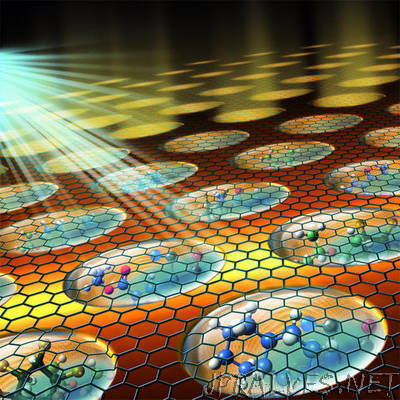
“By capping liquids with graphene, an ultrathin sheet of pure carbon, researchers at the National Institute of Standards and Technology (NIST) and their colleagues have revitalized and extended a powerful technique to image surfaces. The graphene lids enable researchers for the first time to easily and inexpensively image and analyze liquid interfaces and the surface of nanometer-scale objects immersed in liquids. The new capability has the potential to advance the development of batteries, highly charged capacitors for power-grid technology, and new catalysts such as those used in the chemical industry. In the imaging technique, known as photoemission electron microscopy (PEEM), ultraviolet light or X-rays bombard a sample, stimulating the material to release electrons from a region at or just beneath its surface. Electric fields act as lenses, focusing the emitted electrons to create an image. Researchers have used the method for decades to discern such fine-scale features as the patterns of chemical reactions on the surface of catalysts, as well as the magnetic field structure of memory devices and the molecular architecture of biological compounds. But PEEM has typically been restricted to solid surfaces that are in a high-vacuum environment. The method hasn’t had the ability to study liquids and gases at ordinary pressures. A liquid sample, for instance, would evaporate and create sparks if directly exposed to the high vacuum in the PEEM setup.”
